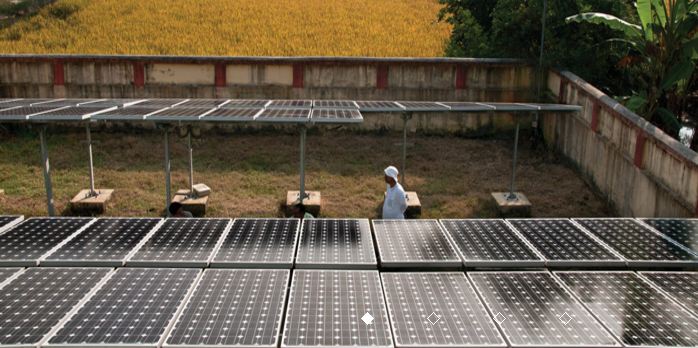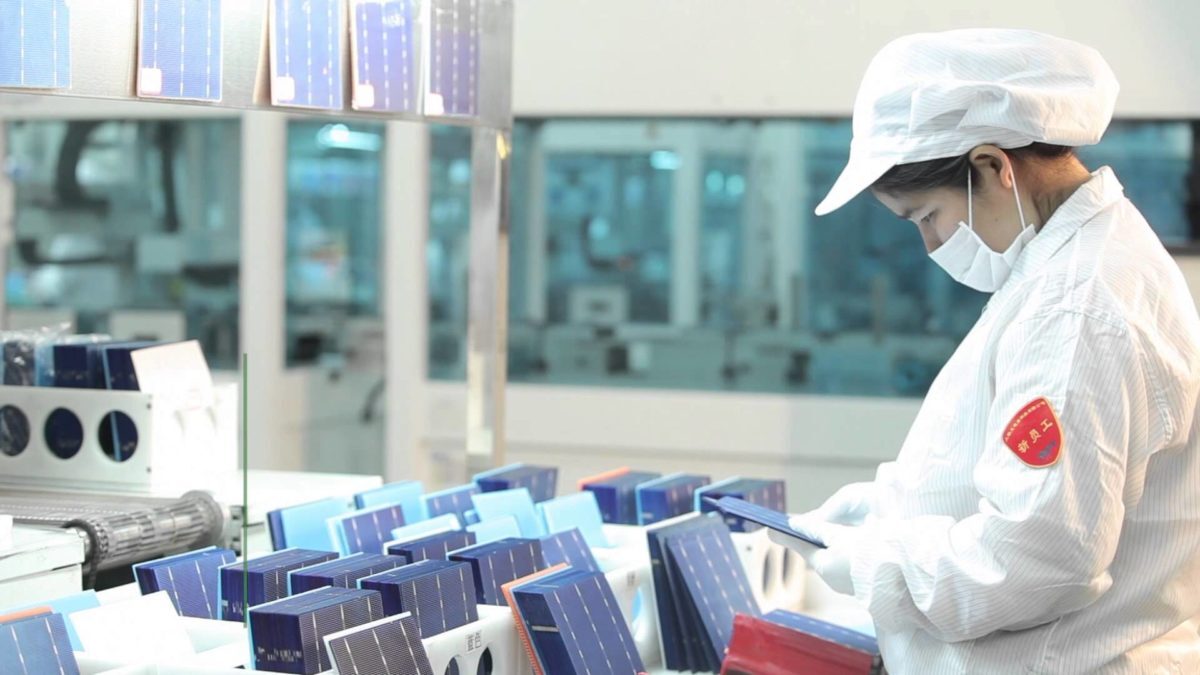Tata Power Solar, the solar power arm of the Indian industrial conglomerate Tata, has announced that it has doubled its solar module manufacturing capacity and increased its cell capacity by 65% in response to the government’s Make in India program.
Rising from 200 MW to 400 MW, module capacity at the Tata Power Solar fab in Bengaluru is now one of the largest in the country, with cell capacity now up from 180 MW to 300 MW.
As part of the expansion, Tata Power Solar has also made the facility entirely automated, and ramped-up capacity in what the company claims is record time.
“We are happy to see our team responding to the government of India’s call of ‘Make in India’,” said Tata Power Solar chairman Anil Sardana. “A robust domestic, qualitative manufacturing base is the backbone of any nation and is a strong foundation for long-term viability of the sector.”
The Modi government has been swift in its support of growing India’s installed renewable energy base, with solar capacity tripling on the past three years to reach 10 GW of cumulative solar power installed. However, much of this growth has been achieved with the use of lower-cost solar components from China, with Indian-made produce barely getting a look-in.
In the middle portion of last year, analysis from Mercom Capital Group shows, India imported $1 billion in solar products during a period when the sector’s entire import and export activity was $1.22 billion. These figures paint a clear picture of the imbalance that exists, and with Indian solar modules still an average of 10% more expensive than Chinese modules, change is far from the horizon.
Prior to Tata Power Solar’s capacity increase, Mercom calculated that India had 8,008 MW and 2,815 MW of module and cell production capacity respectively. However, a vast portion of this potential capacity remains idle and outdated, with operational capacity closer to 5.2 GW (modules) and 1.4 GW (cell).
Factors holding back Indian domestic solar manufacturing are many, not least a lack of support from the government, despite the programs put in place under the Make in India scheme. Some tenders issued under the National Solar Mission (NSM) do reserve some capacity that must be built with domestically produced solar components, but India’s previous Domestic Content Regulations (DCR) have already fallen foul of World Trade Organization (WTO) rulings.
However, Tata Power Solar CEO Ashish Khanna is confident that the Tier-1 firm’s support of domestic manufacturing will set India’s solar industry in good stead over the coming years, which are expected to see the nation add a further 90 GW of capacity by 2022.
“This expansion and modernization has come on the backdrop of our landmark achievement on being the first Indian company to have shipped 1 GW of modules worldwide,” said Khanna. “We have again demonstrated our long-term commitment to manufacturing the best quality panels for our international as well as Indian clients.
“This also validates our capability to manufacture solar panels and cells comparable to the best in the world.”
This content is protected by copyright and may not be reused. If you want to cooperate with us and would like to reuse some of our content, please contact: editors@pv-magazine.com.



By submitting this form you agree to pv magazine using your data for the purposes of publishing your comment.
Your personal data will only be disclosed or otherwise transmitted to third parties for the purposes of spam filtering or if this is necessary for technical maintenance of the website. Any other transfer to third parties will not take place unless this is justified on the basis of applicable data protection regulations or if pv magazine is legally obliged to do so.
You may revoke this consent at any time with effect for the future, in which case your personal data will be deleted immediately. Otherwise, your data will be deleted if pv magazine has processed your request or the purpose of data storage is fulfilled.
Further information on data privacy can be found in our Data Protection Policy.